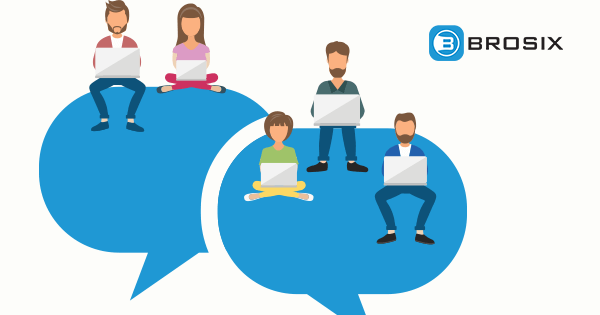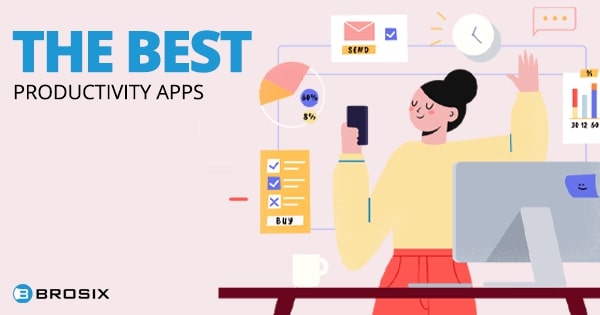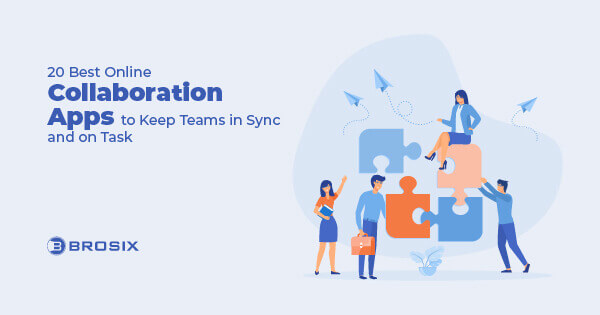Email and instant messaging (IM) have both been around for some time. Dating back to the 1970s, email has become one of the most recognizable channels of communication. By 2024, user numbers are expected to reach nearly 4.5 billion, with a 3% annual growth rate.
While instant messaging technology predates email, the phenomenon didn’t take root until the 1990s, as platforms like AIM, ICQ, Yahoo, and MSN Messenger gained mainstream popularity.
Both technologies are widespread among individual users and in workplaces. In your personal life, you may prefer the real-time communication instant messaging provides via a host of ever-popular chat applications. But what about at the workplace?
When examining email vs instant messaging for business communication, consider the pros and cons of both. So let’s settle the email vs instant messaging debate once and for all.
The key differences between email and instant messaging are in terms of speed and level of formality. Email is important in a business setting, providing a means to reach more people simultaneously through mass messaging. Today, almost everyone has an email, and it’s easy to send an email and check your inbox at any time, through multiple devices, such as your smartphone.
However, it’s not suitable for communications that require voice, video, or other collaboration tools. Email communication is also easily trackable, meaning that you can access, organize, and store important information and keep records of previous interactions, proving that email is here to stay. Unlike email, instant messaging is often more relaxed in tone.
Instant Messaging
Some people say that instant messaging is suitable only for informal messaging. However, it can be seamlessly integrated into the workplace.
Indeed, you often need an existing email account to access IM platforms. IM also remains proprietary, with users needing to use the same platform to take advantage of its many benefits.
Here are 10 reasons to make instant messaging your go-to in 2024.
1. Ensures communication
The more ways team members have to communicate with each other, the better. When relying on email only, colleagues can be hesitant to reach out for quick consultations or to share some recent news.
Instant messaging ensures communication by providing teams with several channels to stay in touch.
- Direct messaging for quick, one-on-one conversations
- Chat rooms for group discussion, by team, department, project, or location, for example
- Voice and video calls to facilitate conversations of a personal nature, or clarity when complex explanations are needed
With the ability to choose the method that works best for them, team members are more likely to share and collaborate on an ongoing basis.
2. Safeguards data and privacy
Sadly, no piece of technology is completely immune to those who wish to exploit it. But email presents risks that would otherwise be avoidable with a business instant messenger.
While phishing and ransomware are the top concerns, 82% of organizations have faced some kind of email-based security threat. What’s more, as your email passes through your client’s servers, you automatically surrender control of that data. Once you delete the email, it’s still not clear how long that data remains on your client’s servers.
Self-hosted business instant messaging, as Brosix provides, bypasses these risks.
- Self-hosting your instant messaging network lets you avoid potentially vulnerable or negligent third-party servers and cloud-based platforms.
- End-to-end encryption ensures data and information remain accessible to the sender and recipient only.
- Peer-to-peer channels ensure network activity transpires between authorized users only.
- Anti-virus and malware integration helps root out costly viruses and malware.
3. Facilitates collaboration
Instant messaging advances collaboration in ways that email can’t match. Not only because the communication is in real time, but because today’s instant messengers afford businesses a robust toolkit tailored toward collaboration and teamwork.
Email providers restrict file transfers and file size uploads. Business instant messengers, on the other hand, offer more generous ceilings for sharing files and transfers. Brosix, for instance, offers unlimited-size file transfers, unrestricted by quantity, and is always peer-to-peer.
Facilitating endless possibilities for collaboration, tools like whiteboards pave the way for virtual brainstorming and strategy sessions, dynamic presentations, or the visualization of goals, metrics, and KPIs.
Screen sharing with remote desktop control and instant screenshots, on the other hand, streamlines tech support, simplifies proofreading and editing capabilities, and promotes visual feedback.
4. Saves time
Quickly getting in touch with team members increases the speed and efficiency of any collaboration. Sending emails and waiting for responses can be a time-consuming endeavor. According to Adobe’s email usage study, the average American spends 209 minutes per day checking their work email.
Instant messaging can dramatically reduce this time, as chat functions provide near-immediate response times. What’s more, the fear that colleagues will bother each other at inopportune moments with instant message notifications can be eliminated through custom user statuses and auto-replies.
5. Reduces clutter
Inquiries, announcements, updates, annoying email threads that have nothing to do with you, and, in many cases, spam all mean one thing: clutter. And if you’ve got work and personal email addresses, not to mention separate devices, the problem multiplies.
Instant messaging encourages direct and concise communication, reducing the number of emails that can often be answered with a few words. An ongoing group chat targeted at a specific team or task, on the other hand, could reduce those irritating text messages. And while you’ll never get rid of spam altogether, by decreasing some of your email traffic, bit by bit, you can begin to chip away at the clutter.
6. Boosts productivity
Building and maintaining momentum on a project is crucial. Unfortunately, this is difficult to do when only using email, as team members often have to wait for responses.
Instant messaging increases the speed at which information is shared by allowing colleagues to send and receive information in real time. This minimizes the waiting time to receive a response.
Importantly, it helps keep engagement levels high and reduces workflow disruptions. In fact, better use of instant messaging and other social technologies, as opposed to only email, could lead to a 20-25% increase in productivity. This endorses the view that instant messaging is a relative newcomer but invaluable.
Explore the many ways you can use instant messaging to boost your productivity, like enhancing your power to delegate, streamlining remote meetings, and more.
7. Builds relationships
Truly collaborative environments are built on a foundation of close personal relationships. This is difficult in modern work environments where team members not only spend most of their time at the computer, but are often distributed across different locations.
Unfortunately, email is more appropriate for formal conversations and doesn’t do much to change this situation. Its impersonal and standardized nature doesn’t allow team members to speak freely.
With instant messaging, however, team members can take advantage of a host of chat options for different conversations. This helps teams get to know each other in real time, improves internal communication and builds team camaraderie and relationships.
- Hold virtual cafe sessions or team-building games via video chat with remote or international teams.
- Employ a chat room to share company news (good or bad), team victories, or birthday or anniversary wishes.
- Express your mood and sense of humor with a variety of emojis.
8. Provides familiarity
When examining internal processes, you want the most effective solutions. The lag time of email, in addition to junk and spam email and malware, slows teams down and hinders productivity.
As popular instant messaging apps, such as Slack and WhatsApp, boast billions of users, your team is likely familiar with the technology already. They probably prefer it. So, it’s the better choice when it comes to feeling at ease with the tech and its effective use.
9. Improves efficiency
Instant messaging improves workplace efficiency. It’s fast and simple to send a single message whenever you need to communicate instantly. Furthermore, the blend of features and collaboration tools provided by all-in-one platforms synchronizes teamwork.
The ability to pair real-time communication and collaboration tools allows you to harmonize processes that would otherwise require multiple, costly tools and software. For example, using video chat with features like a virtual whiteboard or screen-sharing with a remote desktop offers many established use cases to improve team efficiency.
- Dev and QA teams can more easily collaborate on test cases, functional documentation, and product demos.
- Copywriters and designers can more efficiently work together on copy, edits, and page layouts.
- Teams can more productively brainstorm marketing campaigns, employee happiness initiatives, and more.
Just remember to follow these guidelines to ensure your video chats and collaboration remain effective.
10. Focuses teamwork
To facilitate a workflow that’s focused and productive, use the administrative tools at your disposal. Your instant messaging software should allow you to customize the network experience to focus teamwork in a way that suits your organization.
Brosix, for example, provides a robust enterprise toolkit. It enables businesses to tailor the platform to their unique communication and collaboration needs. Brosix affords:
- The ability to set multiple administrators
- The ability to establish individual data security levels
- Control over shared chat spaces
- Control over the features to which users have access
- Full contact management
- Comprehensive chat history archives
Conclusion
Businesses, teams, and individuals must constantly search for ways to increase work efficiency, productivity, and performance. That said, many still rely on basic email for much of their communication and collaboration needs. Instant messaging as a communication tool is often associated with casual chat.
When considering email vs instant messaging at work, instant messaging offers many advantages that email can’t match. Try Brosix and not only take advantage of instant messaging, but begin to dramatically improve how you communicate, collaborate, delegate, and more!







